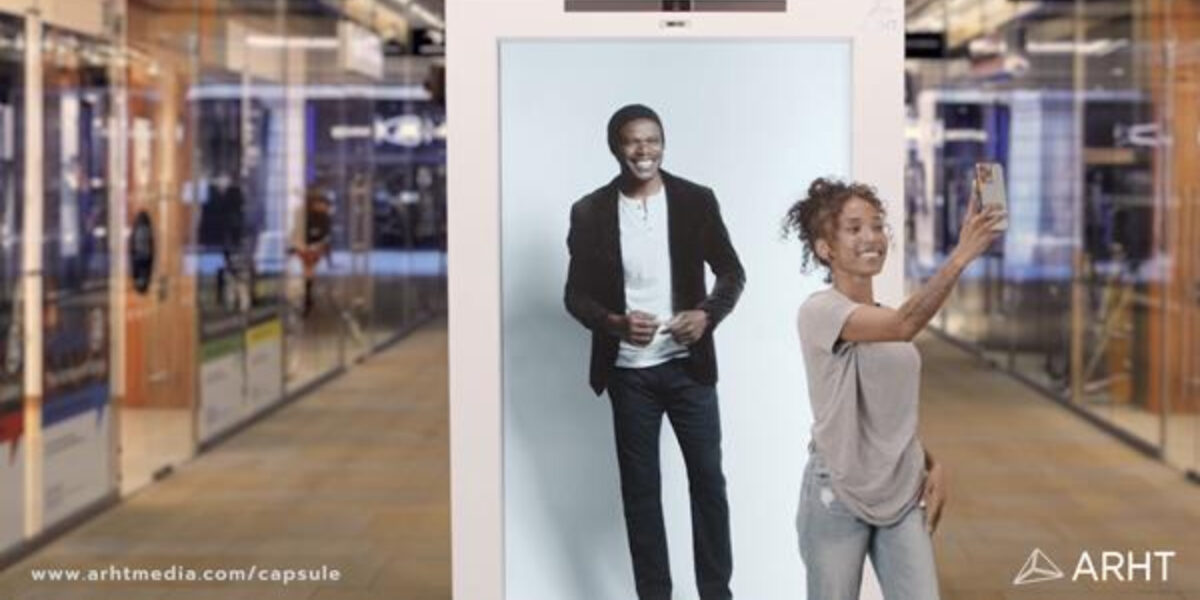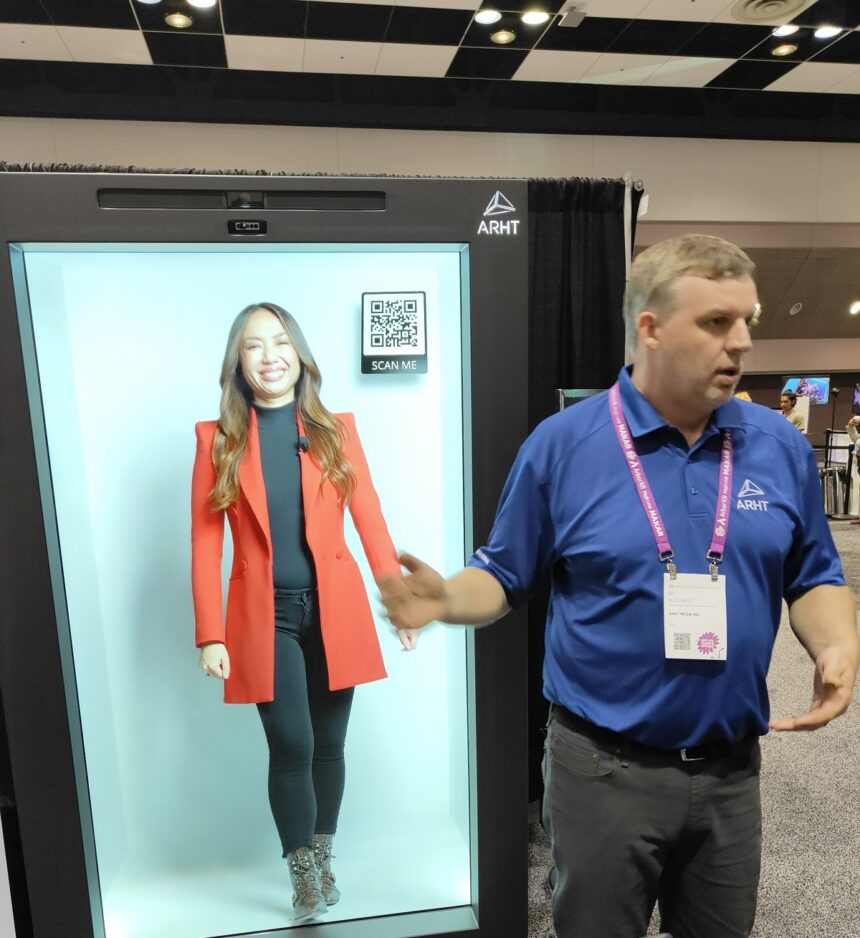A Close-Up Look at ARHT's Capsule Display

An in-person look at ARHT's Capsule coming to "bring holography to everyone" and add depth to remote presentations.
Telepresence is one of the great promises of future technology. Even today’s basic “video calls” have revolutionized remote work, virtual events, and even spending time with friends and family. However, it often lacks a feeling of true presence. A life-size 3D display from ARHT aims to change that.
Meet ARHT
ARHT went public in 2014 with a goal to “bring holography to everyone.” The team has been working on that, with clients and customers in fields ranging from education to defense to entertainment and enterprise. The hardware might be a bit much for the average person right now, though.
ARHT has two main products, the “Capsule” which is meant for one to two remote presenters, and the Virtual Global Stage for multi-presenter remote broadcasts. The company also recently announced a custom multi-panel display measuring over ten feet wide.
Many first saw the Capsule when it played a major part in the Augmented World Expo shortly after the product’s initial release.
Face-to-Face With the Capsule
AWE attendees had at least two opportunities to see the Capsule in action. First, when event founder Ori Inbar appeared via Capsule to deliver the opening keynote. This turned out to be a pre-recorded rendition of a speech written by artificial intelligence, allowing the real Inbar to take the stage and seemingly argue with the digital version of himself.
Later in the conference, technologist Rony Abovitz (former Magic Leap CEO) used the Capsule to appear remotely from Boston for a fireside chat with Professor Charlie Fink. This was a more engaging demonstration of the technology, involving not a recorded presentation but a live discussion – including an admittedly awkward attempt between Fink and Abovitz to share a virtual high five.
For those who wanted to see the display up close, ARHT was also present on the expo floor where I was able to get up close and personal with the Capsule, and talk to company representative Conor O’Reilly.
How ARHT's Capsule Display Works
The Capsule is over seven feet tall, and four and a half feet wide. That’s plenty of space to fit two remote presenters, or one remote presenter with some scenery and props. Google had entertained a similar size in early iterations of the Starline prototype before switching to a smaller scale that looks more like a TV than a phone booth.

The ARHT Capsule is large enough for presenters to appear remotely as a life-sized hologram. Image: Jon Jaehnig | MIXED.
The device also has a touchscreen and built-in motion sensor as recorded sessions can be selected by passersby, or the machine can fall asleep and wake up depending on whether anyone is around. While that kind of activation has its use cases, it’s not how most clients and customers use The Capsule.
“Live content is our bread and butter,” said O’Reilly. “We can beam you anywhere in the world with less than a second of latency.”
A remote presenter stands on a typical greenscreen capture stage - although only one camera is needed to create their ARHT “hologram”. The remote presenter also uses at least two screens, one that shows the audience, and one that shows themselves.
“If you already have a greenscreen capture studio, you have 98 percent of what you need,” said O’Reilly.
How Well Does it Work?
As far as how well it works, it seems like the kind of thing that people could come to take for granted. I’ve seen 3D displays that look like what you might expect a 3D image or “hologram” to look like in 2023 - they're technologically impressive, but not easy on the eyes. This was the opposite.
You can tell it’s a screen rather than a window, but it’s a big improvement over “flat” displays. The display isn’t transparent - you don’t see artifacts of different angles of the image. It's the kind of impressive that lets you focus on the message without getting lost in the medium.
Keep an Eye Out for ARHT
The ARHT Capsule has been used in entertainment and retail activations, as well as for live presenters to offer remote speaking engagements, as we saw at AWE. The larger Virtual Global Stage has been used for award shows, newscasts, and other distributed events. While the panels aren’t common in the wild yet, keep your eyes open. One might be closer than you think.
Note: Links to online stores in articles can be so-called affiliate links. If you buy through this link, MIXED receives a commission from the provider. For you the price does not change.